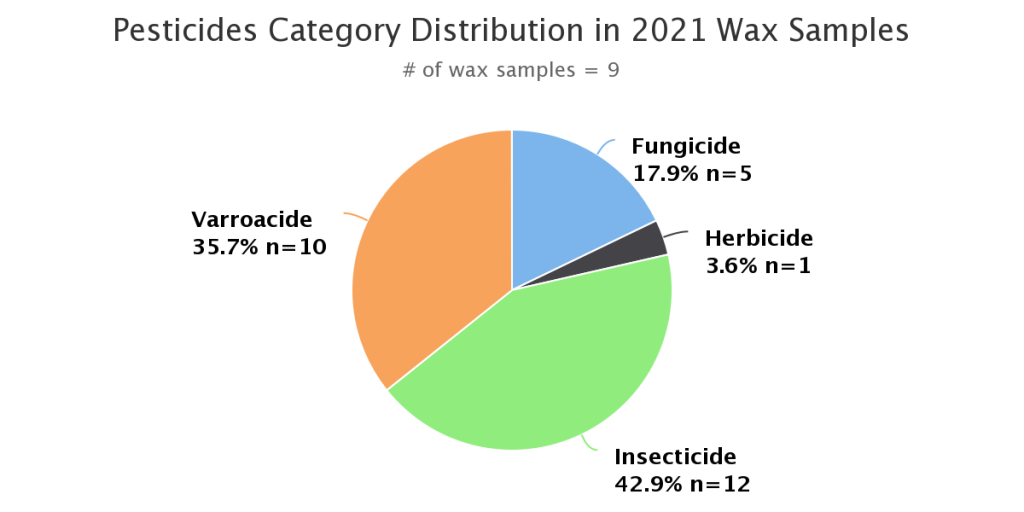Pesticides
Pesticides are chemicals that are used to control unwanted pests. From mosquito and tick repellants to weed killers for lawns, to agricultural chemicals, pesticides are powerful tools that can be beneficial. Their usage can also have unintended consequences.
Bees encounter pesticides most often from agricultural use, in-hive products like miticides, community mosquito control, landscaping programs, and homeowner lawn and garden use. Beekeepers rely on pesticides to treat Varroa mites and farmers and gardeners rely on pesticides to treat unwanted insects, fungus, and weeds. While insecticides like neonicotinoids are the most widely known pesticides to impact bees and pollinators, other pesticides such as herbicides can have indirect effects by reducing blooming plants that bees need to survive. Even some fungicides may have unintentional effects on honey bee nutrition or may increase toxicity when mixed with other chemicals.

Beeswax inside of a colony can easily become contaminated with (and often hangs on to) the various pesticides bees encounter. This chart from the Bee Informed Partnership, shows the proportion of pesticides, by target, in wax samples taken from honey bee colonies across the United States. Varroacides make up a large chunk because beekeepers apply these in colonies to control Varroa. Bees tend to encounter insecticides and fungicides while foraging in cropping systems. Fungicides are often used in almond production and blueberries, which many colonies visit for pollination. Samples to produce this data were collected through the National Honey Bee Disease Survey (USDA, HNBDS) in association with Apiary Inspectors of America and University of Maryland.
When considering pesticide effects on pollinators, scientists and beekeepers must be aware of the lethal effects as well as sub-lethal effects. Sublethal effects can be less obvious, and include sensory impairment, reduced immune functions, reduced ability to forage, and other damaging but not immediately deadly effects.
Pesticides are part of current agricultural practices, but many groups are working on mitigating risk to honey bees and other non-target insects through the development of communication tools, best management practices, and the use of integrated pest management (IPM).There are many resources that can be used to learn more about the use of pesticides in the United States, for example, the following tool from the United States Geological Survey, which estimates pesticide use in the United States. Another excellent resource is the California Department of Pesticide Regulation (DPR).